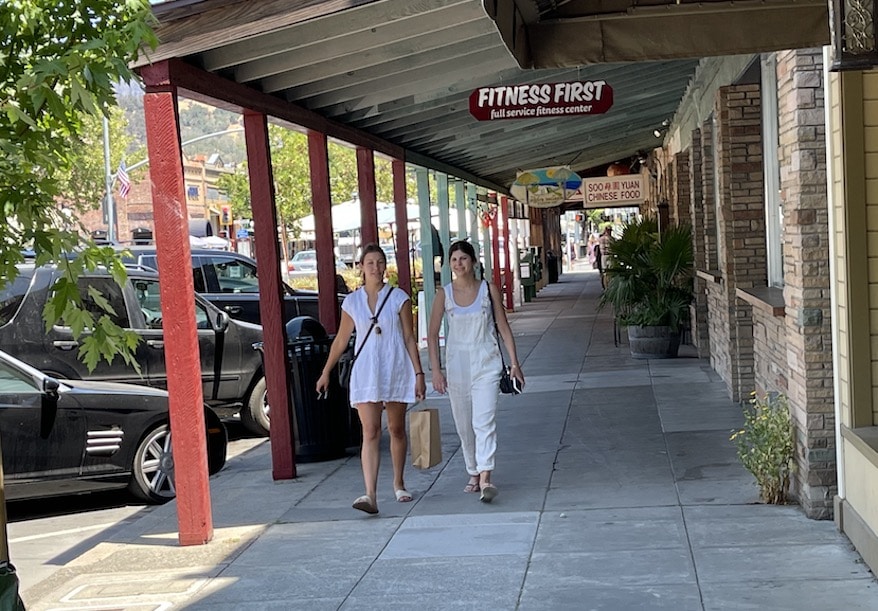
The gyms are finally opening up. At Calistoga Pilates they are taking appointments for Pilates classes, including reformer machines. It’s a mood-boositng exercise just to stroll down Lincoln Avenue and see the shops open at long last.
Located at the northern end of California’s Napa Valley, Calistoga is a small town with abundant attractions. Blessed with prolific vineyards, a temperate climate and numerous geothermal hot springs, Calistoga since its founding has been a rustic retreat for San Franciscans drawn to its natural setting and healing waters. In recent decades, weekend visitors could be found sipping some of North America’s best wine, floating languidly in thermal baths and enjoying a local cuisine few other towns with a population of 5,200 could hope to offer.
Prior to 2020, its wine industry was complemented by a hospitality sector enriched by 1.1 million visitors a year. But then, seemingly overnight, the Covid pandemic descended and everything abruptly stopped. Three restaurants, several shops and a consignment store closed. Dozens of families moved away, many to cities with less expensive housing. As 2020 drew to a close, Calistoga’s once bustling main street, Lincoln Avenue, remained largely shuttered
Today, Calistoga is coming back to life just as rapidly as it went into eclipse. Some hotels are operating at full capacity. Others say they could be too if former employees would return to work. But the biggest change is one of attitude. On June 15 California finally allowed its vaccinated citizens to take off their masks and visibly smile in public.
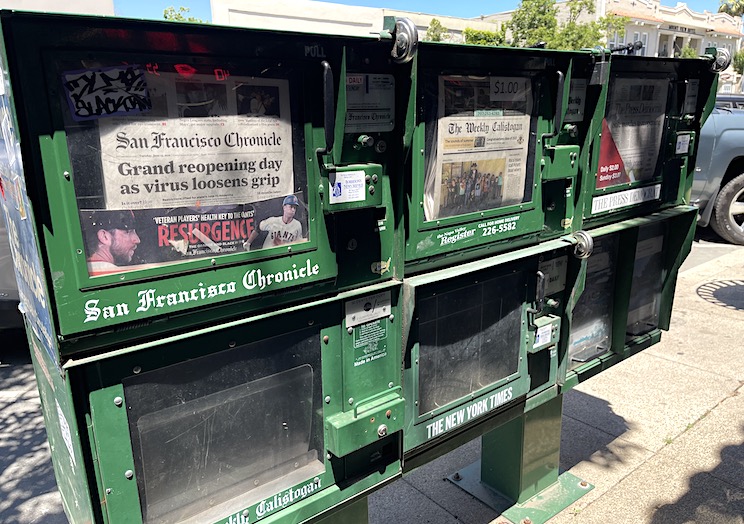
Life in California is officially allowed to return to some version of normal. Not all at once, of course. But after 16 months of lockdown the reopening of stores, restaurants and theaters is front page news.
California’s Saratoga Springs
Calistoga has a long and colorful history. The area was once home to the Wappo Indians, who bathed in its mineral waters and soaked in mud baths made from volcanic ash. In 1823, Spanish explorers discovered the place. A few years later, Calistoga was put on the map by Sam Brannan, who established San Francisco’s first English language newspaper, The California Star. In 1848, the paper announced the discovery of gold. Brannan became California’s first millionaire and spent lavishly.
His dream project was a combination of California hot springs and tony East Coast Saratoga resorts. After a few drinks, he twisted the two, and the result was the name Calistoga. Brannan built a lavish hotel on the site of what is now Indian Springs Resort. To get there, he started a railroad, the Napa Valley Railroad Company, incorporated in 1868. The project failed. Yet Calistoga remained, drawing San Franciscans, many of European backgrounds, to its healing waters, burly old-school masseurs and mud baths.
For Northern Californians, it used to be an inexpensive escape, with basic motels and few eateries. The mineral baths, exercise and diet approach to health was promoted at Dr. Wilkinson’s Backyard Resort and Mineral Springs, which was opened in 1952 by a chiropractor big on healthy eating and a positive attitude.
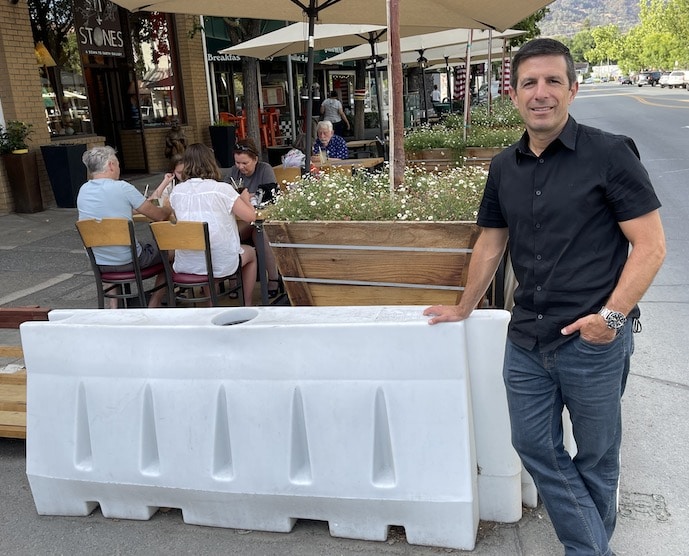
Calistoga’s popular young mayor, Chris Canning. He presided over lockdowns and wildfires, once ordering the town to evacuate. But the winds changed and Calistoga remained untouched, although disaster was close. Now he is keeping a watchful eye on the town’s reopening. The town’s economy runs on tourism, he says, but he welcomes the influx of remote workers fleeing San Francisco who are choosing to live in Calistoga.
Through the decades, Calistoga flourished, attracting city dwellers to its authentic waters, walkable main street and surrounding vineyards. There are glamorous resorts in the Napa Valley, and world-class restaurants, including The French Laundry. But Calistoga is special in that it is naturally blessed with thermal waters, geysers and volcanic ash. Another plus: you can park your car and walk everywhere. Vineyards? In 2009, it was officially recognized as its own designated grape growing region. As it attracted more and more visitors, restaurants and shops opened on the main drag of Lincoln Avenue. There is even a large bookstore, Copperfield’s. In 2014, Fodor’s Travel named it one of America’s best small towns. But its 5,200 population, equally divided between Hispanic and White, is not enough of an economic base.
“We have been a tourist-driven economy since 1883,” emphasizes the town’s young mayor, Chris Canning. During 2020, he grimly recalls the empty streets and shuttered shops. “Then the vaccines came. We vaccinated vineyard workers, restaurant workers, school employees. Now we’re managing to open up.”
Rules of the game?
But like everything else in this new covid world, the rules are vague and interpretations vary. Some spas are opening gradually, reflecting qualms about the safety of touch-treatments like massages. At a recent visit to Evangeline, the Louisiana-inspired restaurant, diners in the outdoor garden, did not wear masks, but employees did. Walk into the Hydro Bar or Ace Hardware without a mask and you’ll be served a drink or directed to the reduced price barbecue grills. Do the same thing at the CalMart grocery store and you’ll be asked to leave.
Not so at the popular hub, Calistoga Roastery, where owner Clive Richardson presides with British-accented wit and genial efficiency. The spacious café, with a large sign touting “The Coffee that Wakes up the Valley”, closed in Apil 2020, then opened a year later with limited take-out, then 50% occupancy.
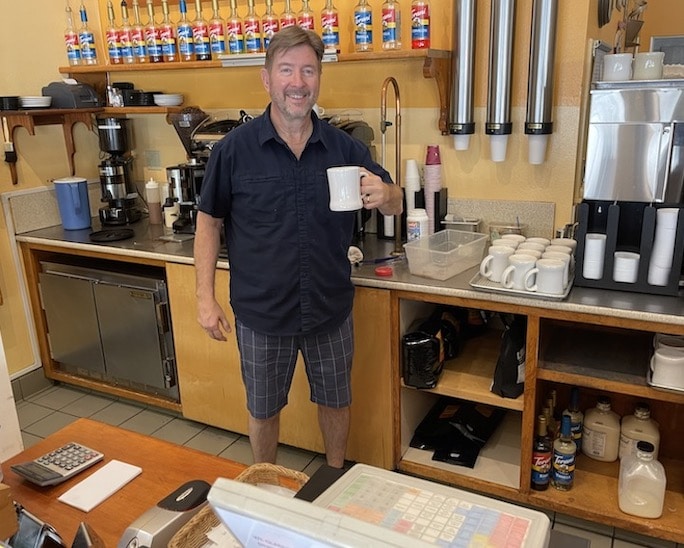
Barista-in-chief, Clive Richardson toasts the town’s re-opening with a cup of java. His cafe is a hub for Calistoga residents and tourists alike and Clive is always ready with a witty, British-accented comment. Without the regulars, he notes, he would not have survived. And these are not people who stare into their laptops. They greet each other and shoot the breeze. Visitors do the same.
Employees at the café don’t wear masks. “They are all vaccinated,” he explains, “and wearing a mask for eight hours a day is soul-destroying”.
Richardson’s story typifies the struggles of this picturesque spa town. For the barista-in-chief, it was touch and go. “It was a time I never want to relive again.” Fortunately, his landlord was generous. And there were the regulars – “without them I would not have survived,” Richardson recalls. “We have come through the worst,” he notes, adding that the situation is still unclear. There are signs everywhere saying that fully vaccinated people can enter without masks. “But I can’t ask people if they are vaccinated.”
Perils of free money
The main problem, he and others emphasize, is finding employees. Many were laid off and never returned. Some merchants insist that lingering government benefits, essential a year ago but now unnecessary, discourage people from coming back to work.
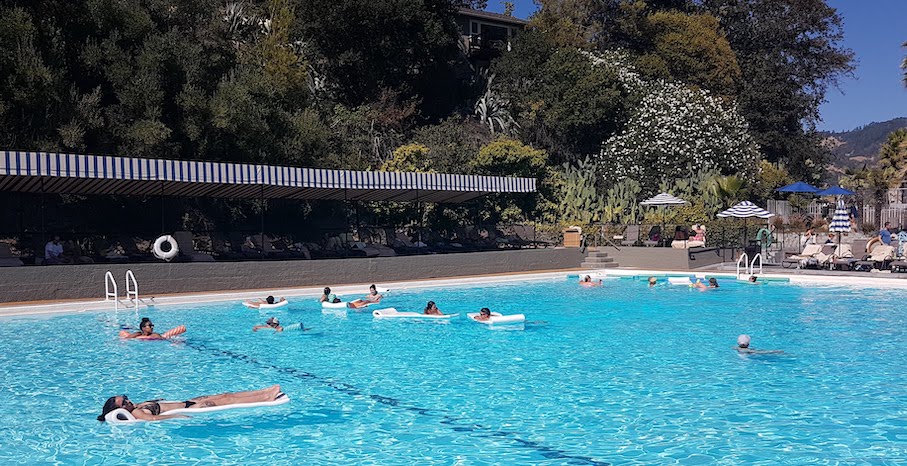
The pool at the Indian Springs resort is the largest in Calistoga. It is surrounded by trees and succulents, with the dramatic geysers erupting nearby. With chic bungalows and a full spa, Indian Springs tells the Calistoga story. The site was first used as Sam Brannan’s lavish hotel. Then when his Calistoga project failed, the pool and a low-cost motel called Nance’s drew visitors from San Franciscans on a budget. Decades later, the place was renamed Indian Springs and totally redone. It is still expanding and ever more stylish.
Victor Fernandez was born in Calistoga, and worked for six years as a waiter at the Calistoga Inn, a favorite lunch spot with a large outdoor terrace overlooking the Napa River. In 2020, he was laid off, and now he’s back. Some staff left, he says and did not return. “They’re rehiring now, and the restaurant looks as it did before Covid.”
Calistoga’s Resurrection
Indeed, pent-up demand brought on by months of Coronavirus lockdowns is driving thousands of emancipated urbanites to rural California’s small towns. Hotel occupancy is climbing, along with visits to wine-tasting rooms. “We’re 100% full on weekends, 60% mid-week, says Mayor Canning. “There is the perception that rural is safer, and we are at the northern tip of the Napa Valley”, he adds.
The recent “economic euphoria” has meant that some hotels and restaurants are increasing their prices. Not a problem for well-heeled people from San Francisco and Marin County, eager to escape to a local paradise. Instead of flying to Provence, France, they can drive an hour and a half, where wine-tasting awaits at local vineyards. Some, notes the Mayor, are working remotely in newly purchased homes in Calistoga.
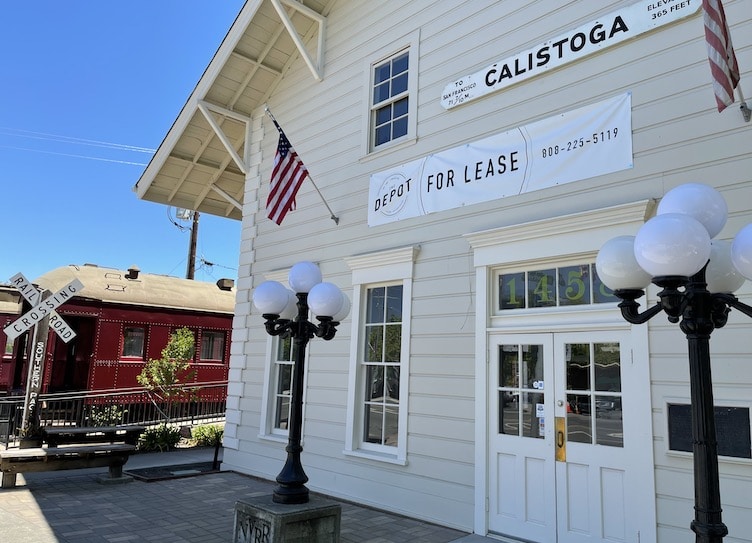
The old railway depot used to house a great wine store, wtih a friendly and knowledgeable proprietor. There was a cafe and shops. All are closed now, but it’s hard to believe that a company won’t take over this exceptional space.
America’s Sparkling Wine
Vineyards adapted by offering outdoor tastings when indoors was considered unsafe. At Schramsberg Vineyards, known for its superior sparkling wines, visitors sit under mulberry trees and sample the fruits of 66 vineyards from California’s cool North Coast. Having a selection of vineyards enables vintners to choose the best Chardonnay and Pinot Noir grapes, used to make Champagne in France, notes vineyard spokesman Matthew Levy. The most popular Schramsberg bubbly is the Blanc de Blancs. In 1972 it was used by President Richard Nixon in his “toast to peace” with China’s Premier Zhou Enlai. It continues to be served at U.S. state functions. Other offerings have various blendings of the two grapes and are aged from two to eleven years in underground caves.
The outdoor tastings were a first, notes Levy, adding that the winery has added flexibility to its visits – now people can taste without taking the tour first.
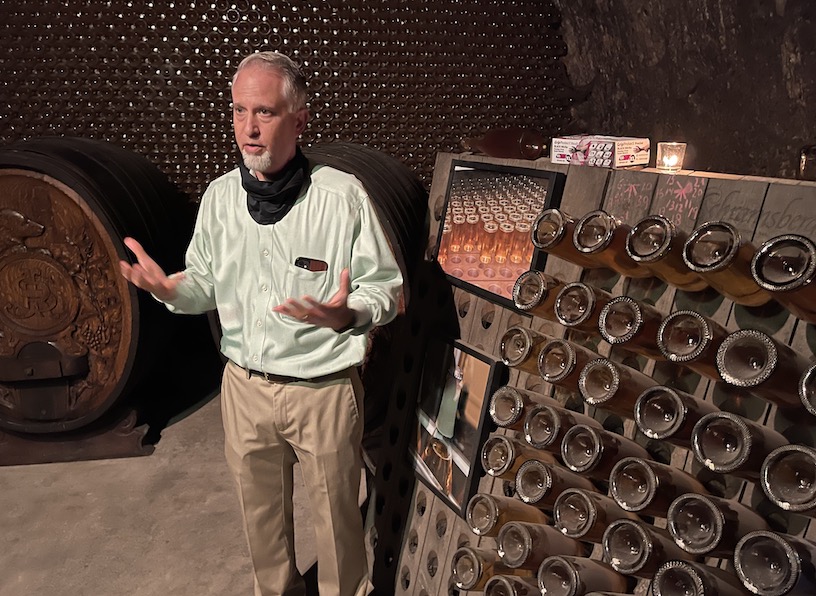
Matt Levy explains barrel fermentation at the Schramsberg Winery, home to one of California’s oldest sparkling wines. Pinot Noir and Chardonnay grapes are used, just like in the Champagne region of France. During the lockdown, visitors could only taste the wine outdoors. Now, tours are starting up again. Barrels are placed in caves a mile long. The earliest ones were dug by Chinese laborers, and you can see their pick marks on the walls.
A vision coming true
Calistoga, notes Mayor Canning, is an adult destination, drawing couples and friends, rather than children. And as covid hopefully recedes, they will have the choice of more upscale properties. Indian Springs, with its geysers and chic bungalows, is now expanding. Dr. Wilkinson’s has completed an artful renovation that pays homage to its mid-century beginnings.
Down the road, Solage Calistoga, with its $1,500 a night room rate, is at full capacity. Nearby, The Four Seasons will open soon. As covid recedes, Sam Brannan’s dream seems closer to reality.![]()
Jacqueline Swartz has a long and affectionate connection with Calistoga. It started with weekend trips with her parents, then continued with grown-up wine tasting and mud baths.

